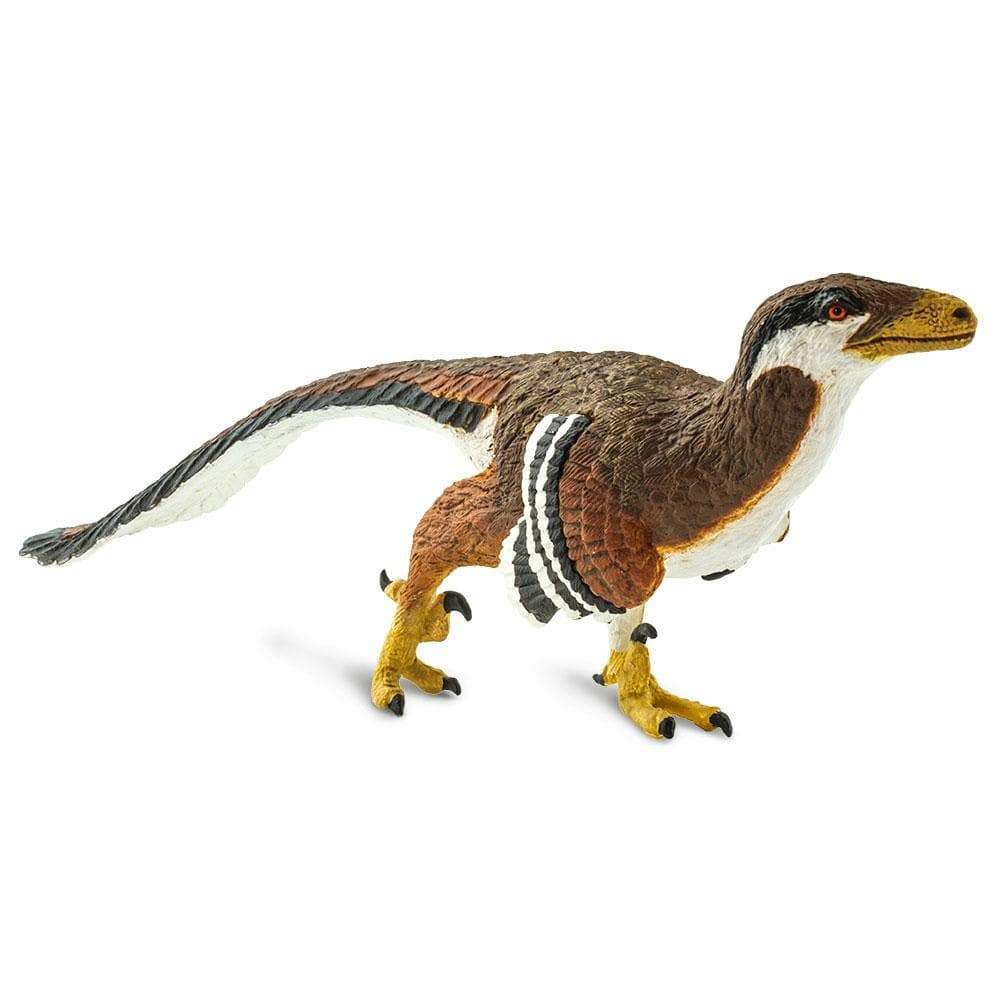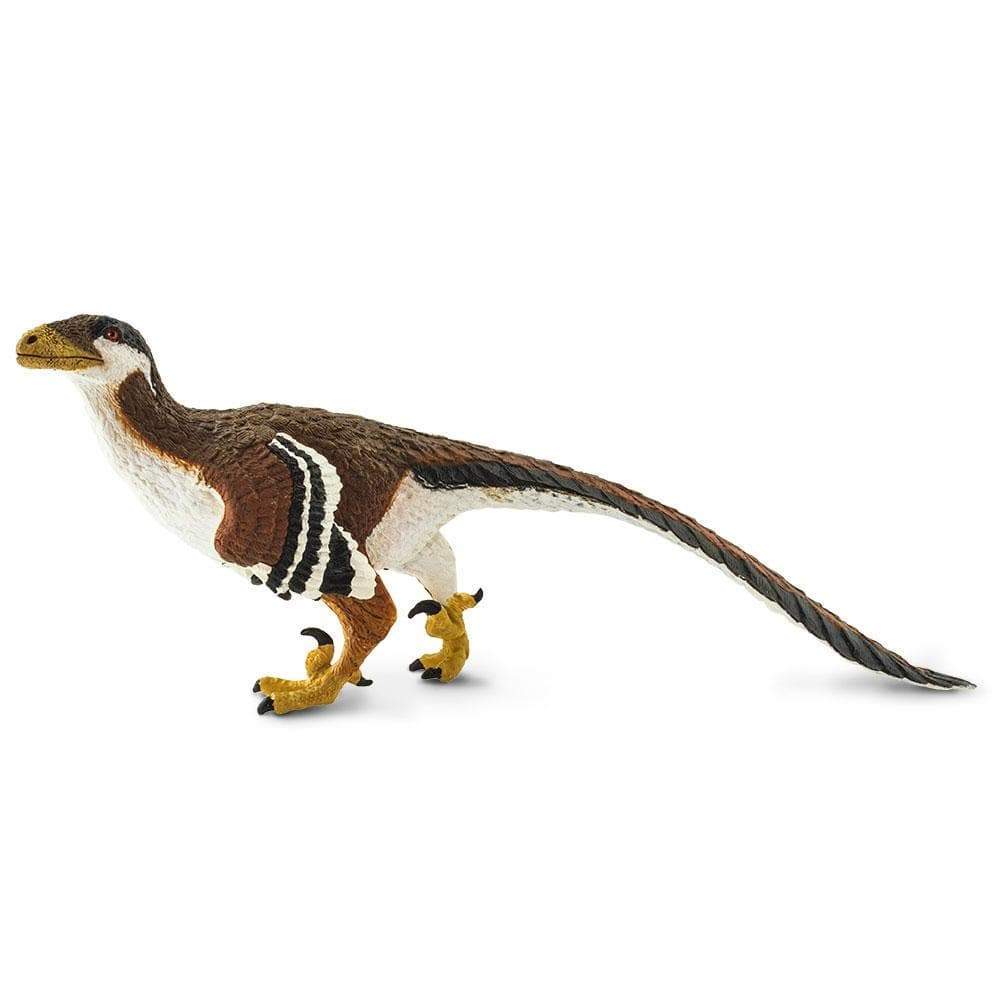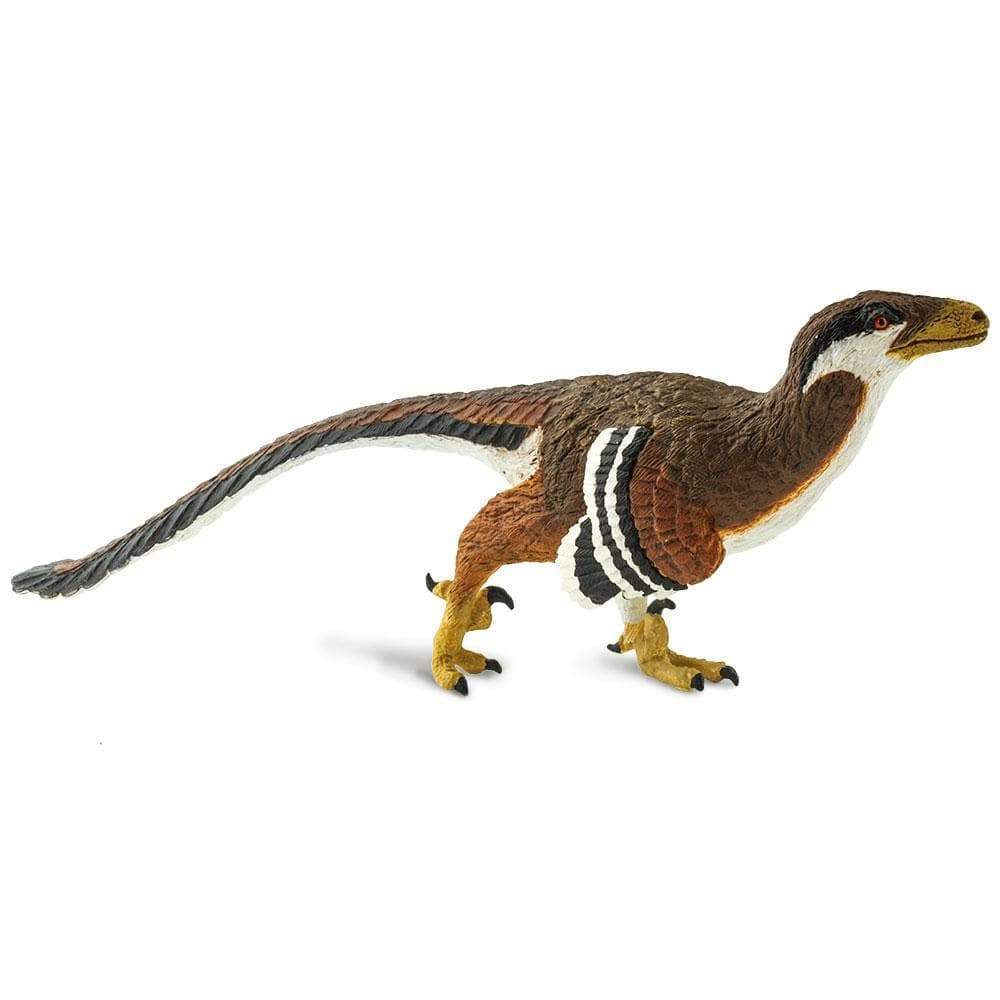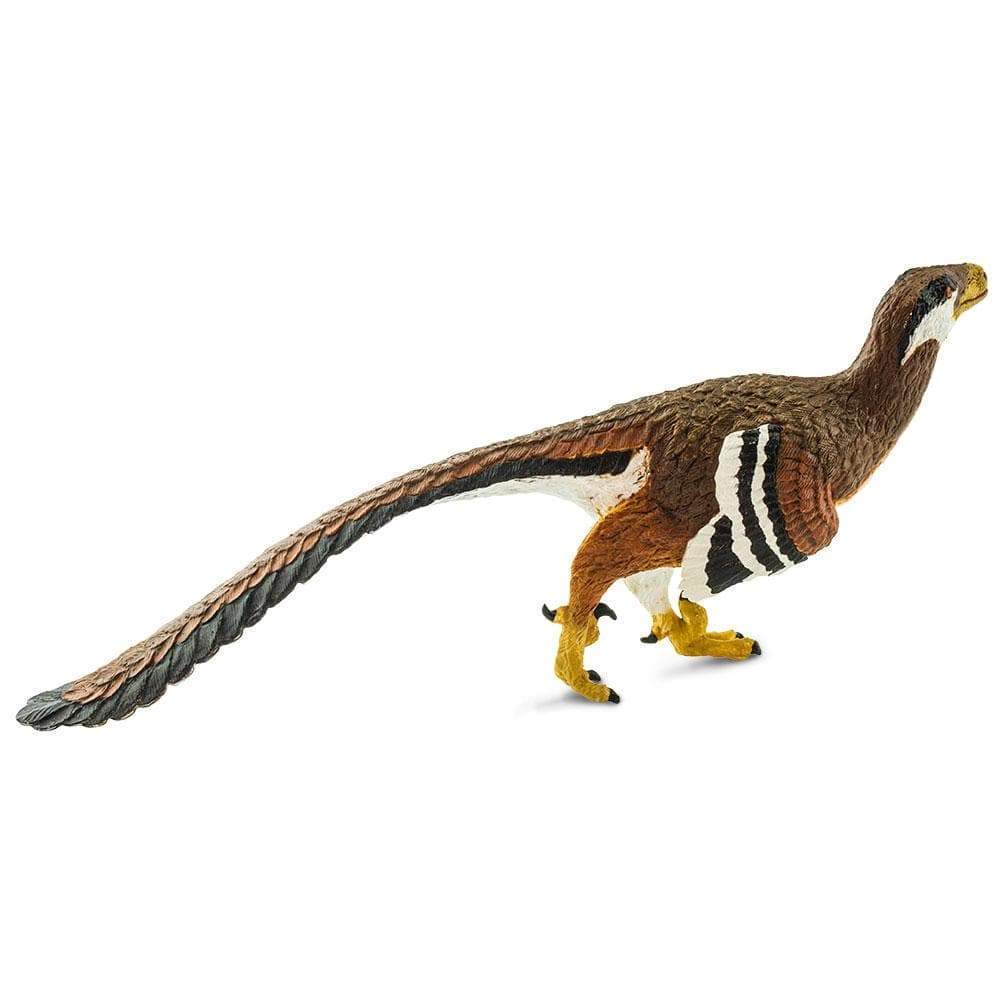1
/
of
7
Zoologishoppen
Safari Ltd - Deinonychus
Safari Ltd - Deinonychus
Regular price
269 SEK
Regular price
Sale price
269 SEK
Unit price
/
per
Taxes included.
Couldn't load pickup availability
Deinonychus was a larger relative of Velociraptor. Like its smaller cousin, it had an extra large claw on each foot that helped it kill its prey. It was also very likely covered with feathers, as this has been found in other members of this family.
Description
John Ostrom is considered the first to describe the taxon, which happened in 1969, but the discovery of this genus is older than that. In 1931, Barnum Brown was out looking for fossils in southern Montana, when he found skeletal parts of a small theropod, several vertebrae, relatively well-preserved bones, parts of forelimbs and skull fragments. Brown named the new fossil Daptosaurus agilis (active lizard), and planned to publish his find. However, this never happened, and the fossil (AMNH 3015) was then relegated to the collections of the American Museum of Natural History, without having been described or given an approved name.
Shortly before his death in 1963, Brown had a conversation with Ostrom, who was then a graduate student at Colombia University. Brown then described the sites he had searched, and Ostrom decided to resume Brown's work on these bone beds.
In the late summer of 1964, John Ostrom and Grand Meyer were out digging for fossils near Bridger, Montana, when they found fossil parts of a front leg, some claws, and pieces of a skull. Parts from at least 3 individuals emerged. The rediscovery of Deinonychus led to a major reassessment of the dinosaurs. People began to speculate whether they might have been warm-blooded and social animals, and not as passive and like today's reptiles as previously thought.
Deinonychus' resemblance to birds also led to the revival of the idea that birds are related to dinosaurs.
Scientific name: Deinonychus (“Terrible Claw”) terrible claw
Characteristics:
This Deinonychus figure is covered in feathers, as fossil evidence of other Dromaeosaurid dinosaurs shows. This Deinonychus is at rest, looking around with its wings neatly folded at its sides and the large, sail-shaped claws on each foot in full view.
Size and Color:
Our Deinonychus model is 8 ¾ inches long and 3 ½ inches tall from toes to beak. This Deinonychus has dark brown, reddish brown, black and white plumage (feathers), with red eyes, sandy yellow skin on feet and nose, and black claws.
Deinonychus is part of the Wild Safari® Prehistoric World collection
All our products are non-toxic and BPA-free
Recommended age: 3+
Size in cm: 22.23 L x 4.45 W x 8.74 H
This model is from 2020
Product Number: 100354
Description
John Ostrom is considered the first to describe the taxon, which happened in 1969, but the discovery of this genus is older than that. In 1931, Barnum Brown was out looking for fossils in southern Montana, when he found skeletal parts of a small theropod, several vertebrae, relatively well-preserved bones, parts of forelimbs and skull fragments. Brown named the new fossil Daptosaurus agilis (active lizard), and planned to publish his find. However, this never happened, and the fossil (AMNH 3015) was then relegated to the collections of the American Museum of Natural History, without having been described or given an approved name.
Shortly before his death in 1963, Brown had a conversation with Ostrom, who was then a graduate student at Colombia University. Brown then described the sites he had searched, and Ostrom decided to resume Brown's work on these bone beds.
In the late summer of 1964, John Ostrom and Grand Meyer were out digging for fossils near Bridger, Montana, when they found fossil parts of a front leg, some claws, and pieces of a skull. Parts from at least 3 individuals emerged. The rediscovery of Deinonychus led to a major reassessment of the dinosaurs. People began to speculate whether they might have been warm-blooded and social animals, and not as passive and like today's reptiles as previously thought.
Deinonychus' resemblance to birds also led to the revival of the idea that birds are related to dinosaurs.
Scientific name: Deinonychus (“Terrible Claw”) terrible claw
Characteristics:
This Deinonychus figure is covered in feathers, as fossil evidence of other Dromaeosaurid dinosaurs shows. This Deinonychus is at rest, looking around with its wings neatly folded at its sides and the large, sail-shaped claws on each foot in full view.
Size and Color:
Our Deinonychus model is 8 ¾ inches long and 3 ½ inches tall from toes to beak. This Deinonychus has dark brown, reddish brown, black and white plumage (feathers), with red eyes, sandy yellow skin on feet and nose, and black claws.
Deinonychus is part of the Wild Safari® Prehistoric World collection
All our products are non-toxic and BPA-free
Recommended age: 3+
Size in cm: 22.23 L x 4.45 W x 8.74 H
This model is from 2020
Product Number: 100354
Share





















